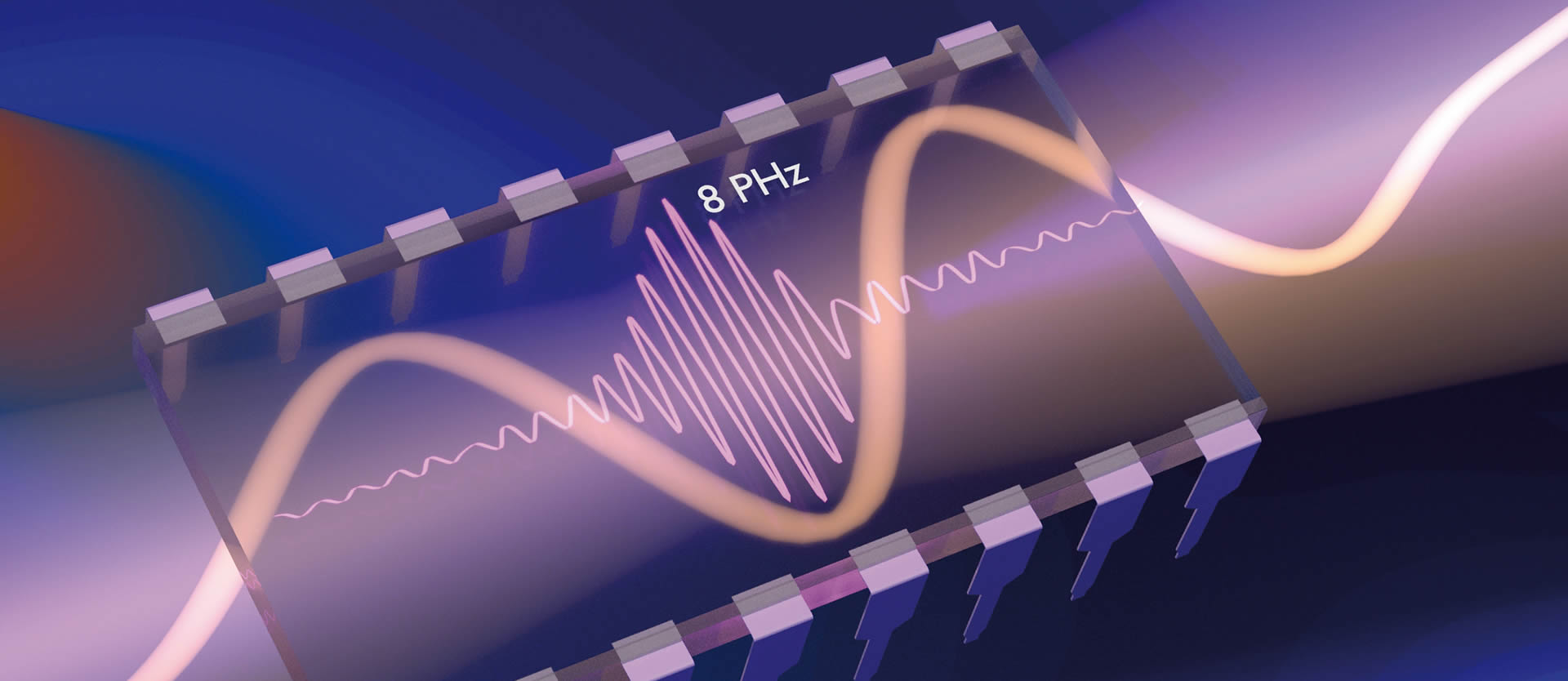“This is the fastest electric current ever measured”

Welt der Physik: How do electrons move in a conventional circuit?
Imagine that the electrons are driven by electric fields, generated by batteries, for example. In a static field, the electrons are driven only in one direction – they flow. In electronic devices, however, alternating current is used, so the electrons oscillate at a certain frequency. In conventional electronic devices, these frequencies can be up to about one hundred gigahertz, one gigahertz corresponding to one billion oscillations per second.
How is the velocity of electrons restricted?
The electrons collide with atoms and molecules in the solid matter through which they move. This restricts their speed, and when you try to use ever-faster electric fields, the electrons can essentially no longer keep up, and become slower. In the past, researchers have tried to cool solids to very low temperatures, leaving the atoms almost frozen. Then, the electrons can move more easily. But this effect is also limited.
Why would higher electron velocities be desirable?
This concerns the question of: how can we make electronic devices even faster? Scientists have been producing smaller and smaller circuits for decades. As a result, the distances that the electrons have to cover are getting shorter and shorter, making the electronics function faster. This approach has worked for decades, but is now reaching its limits, as the electronics produced are now so thin that they measure only a few atoms in thickness. Thus, we need to make the electrons move even faster to achieve the speed we want. Ultimately, electronics is the controlled movement of electrons within solid matter.
How can we achieve even higher-frequency electron oscillations?
We know that atoms can interact with electrons on time scales of picoseconds down to femtoseconds. So we must try to drive electrons even faster than these time scales. For this, stronger and faster forces are needed than those used to date. However, with a normal electric field, generated by, for example, a battery, one would destroy the material at these speeds.
What was your approach to driving the electrons?
We used light. Extremely short laser pulses, only slightly longer than the vibration of a single light wave, irradiated solid silicon dioxide. Light of course, is also an electric field that can drive electrons and cause them to oscillate back and forth. The electric fields of these laser pulses vibrate at light speed, and they can be very strong. Although matter and solids cannot withstand such extremely strong fields, this works in our case because the fields are only so strong for an extremely short time. Therefore, laser forces can be applied to electrons that are about ten times stronger than would be possible with standard methods.
What frequencies did you achieve?
We drive them very quickly, so fast that the much heavier atoms do not move and disturb the electron movement. In this case, the electrons vibrate not only as rapidly as the electric field of the laser pulse, but even faster, so their reaction is not linear. We were thus able to reach frequencies of eight petahertz, equivalent to eight million billion oscillations per second. This is the fastest electric current ever measured, and is about a million times faster than conventional electronics.
How did you measure this current?
This is precisely the crux of the matter. Just as no electronic device can produce these high frequencies, we cannot build a device that measures them. However, in our research field of attosecond physics, we have developed techniques in the last few years that allow us to measure the extremely fast oscillations of electromagnetic radiation – mind you, that concerns radiation, and not electrons. But because we drive the electrons so rapidly and achieve such a high rate of oscillation, they emit radiation in the extreme ultraviolet range. This radiation contains all the secrets of the actual vibrational motion, and by measuring it, we can infer the movements of the electrons. This is the real breakthrough for us.
Is this a matter of fundamental research – or are there possible applications?
We consider electronics from the perspective of a physicist. We explore principles, and want to find out what is actually, physically possible. We knew that the interaction between light and matter caused electrons to move. But it has not long been clear that lasers could achieve this, and that you could also observe this movement. Of course, we cannot yet connect a transistor into this circuit. But this provides a foundation which could eventually be applied to the development of faster electronics.













